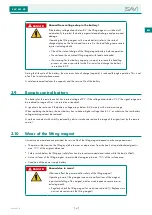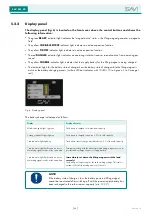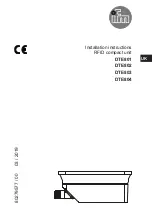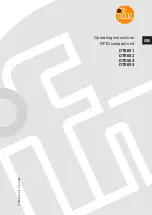
EN
7 OPERATION
7.1
Application restrictions for the lifting magnet
7.1.1
General information
The following parameters must be considered when evaluating the suitability of the lifting
magnet:
■
Positioning the lifting magnet on the load. See section 7.1.2.
■
Chemical composition of the load material – iron alloys have different magnetic properties depending on
the contained chemical elements, which can reduce the lifting capacity of the lifting magnet – see section 7.1.3
“Correction table – chemical composition”.
■
Load shape (flat, round) – limits are defined by the shape of the contact surface and restrictions of the excessive
length – see section 7.1.4.
■
Air gap – i.e. the non-magnetic distance between the contact surface (magnetic surface) of the lifting magnet
and the load to be handled, including all surface flaws, uneven areas, dirt and presence of non-magnetic materi-
als (paper, coating, film, etc.).
■
Material thickness of the load – closing the magnetic circuit requires a certain material cross section. The maxi-
mum lifting capacity of the lifting magnet requires a minimum thickness – see section 7.1.4. A further reduction in
the thickness also reduces the lifting capacity of the magnet.
■
Material temperature: The operating temperature range is between -10 to +70 °C. At higher temperatures, the
protective coating of the coil degrades (causing permanent damage to the lifting magnet)-
■
Working cycle – the length depends on the battery power – 8 hours at 50 % load.
■
The lifting capacity of the lifting system (e.g. a crane) must be at least the sum of the weight of the load and the
weight of the lifting magnet plus any accessories.
7.1.2
Positioning the lifting magnet
Attach the lifting magnet symmetrically directly (as accurately as possible) above the centre of gravity of the load.
For the orientation of the lifting magnet respective to the dimensions “W” and “L”, see fig. 9.
Fig. 9: Positioning the lifting magnet
When handling long and flexible loads (in particular sheet metal), gravity can cause the ends of the load to bend
or sag. Therefore, always position (orient) the lifting magnet vertically (crosswise) to the length of the load. I the
lifting magnet was to be positioned lengthwise, the load could peel off (fall off) more easily.
SAV 531.42
Version 1.0
[
91
]
Содержание SAV 531.42
Страница 3: ...BATTERIE LASTHEBEMAGNETE BETRIEBSANLEITUNG Version 1 0 DE SAV 531 42 just experts ...
Страница 56: ...SAV 531 42 NOTIZEN Version 1 0 56 ...
Страница 57: ...BATTERY POWERED LIFTING MAGNETS OPERATING INSTRUCTIONS Version 1 0 EN SAV 531 42 just experts ...
Страница 110: ...NOTES SAV 531 42 Version 1 0 110 ...
Страница 111: ......
















































